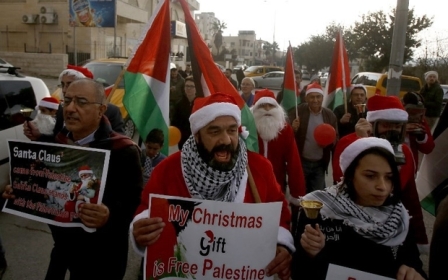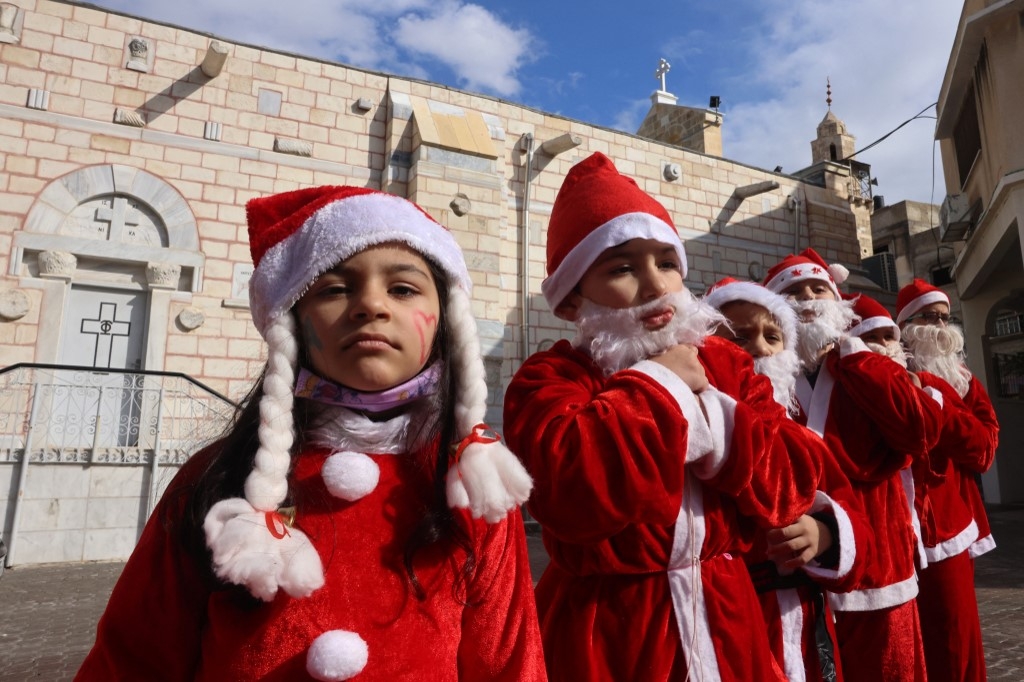
In pictures: Christmas around the Middle East
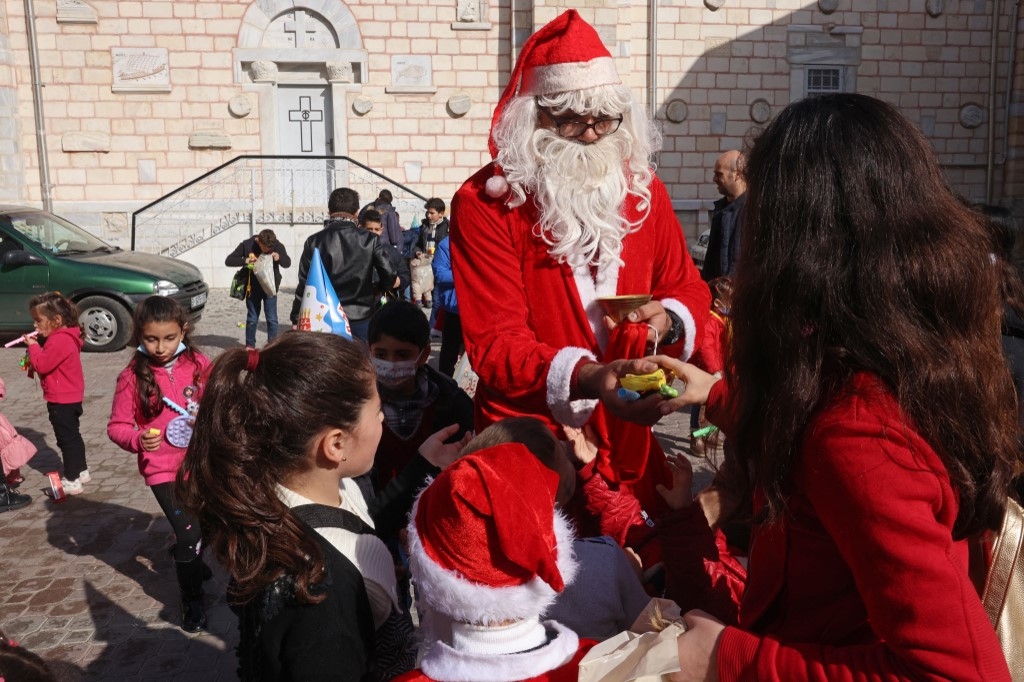
A Palestinian man in a Santa Claus outfit give out sweets near the Greek Orthodox Church of Saint Porphyrius in Gaza city on Christmas Eve. The Palestinian territory besieged by Israel since 2006 is home to a Christian population of over 1,000 people. (AFP/Mohammed Abed)
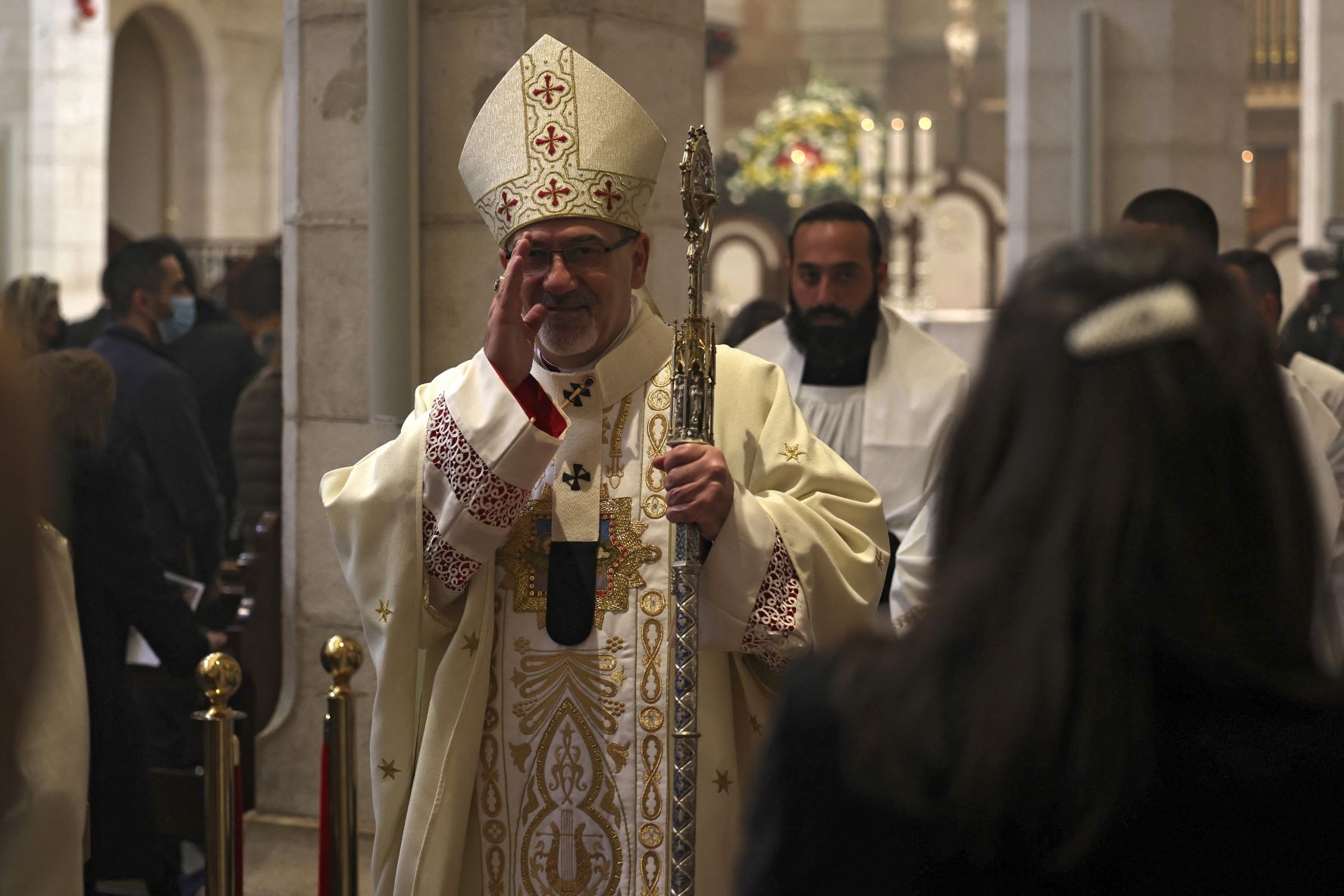
Jerusalem's Latin Patriarch, Pierbattista Pizzaballa, arrives at the Church of Saint Catherine in the occupied-West Bank city of Bethlehem on Christmas Day. Christians believe that the Palestinian city is the scene of the nativity, or the birth of Jesus, two millenia ago. (AFP/Abbas Momani)

Christian worshippers pose for selfies inside the Church of the Nativity in Bethlehem on Christmas Day. The Roman Emperor Constantine I first built a church over what is believed to be the site of the nativity in the fourth century. (AFP/Abbas Momani)

Visitors walk in Manger Square on Christmas Eve near the Church of the Nativity. Until the start of the Covid-19 pandemic, religious tourism formed the backbone of Bethlehem's economy, as the city attracted Christian pilgrims from around the world. (AFP/Abbas Momani)

Freedivers dressed in Santa Claus costumes pose for a picture while submerged under water off the coast of Lebanon's northern city of Batroun on Christmas Eve. (AFP/Ibrahim Chalhoub)
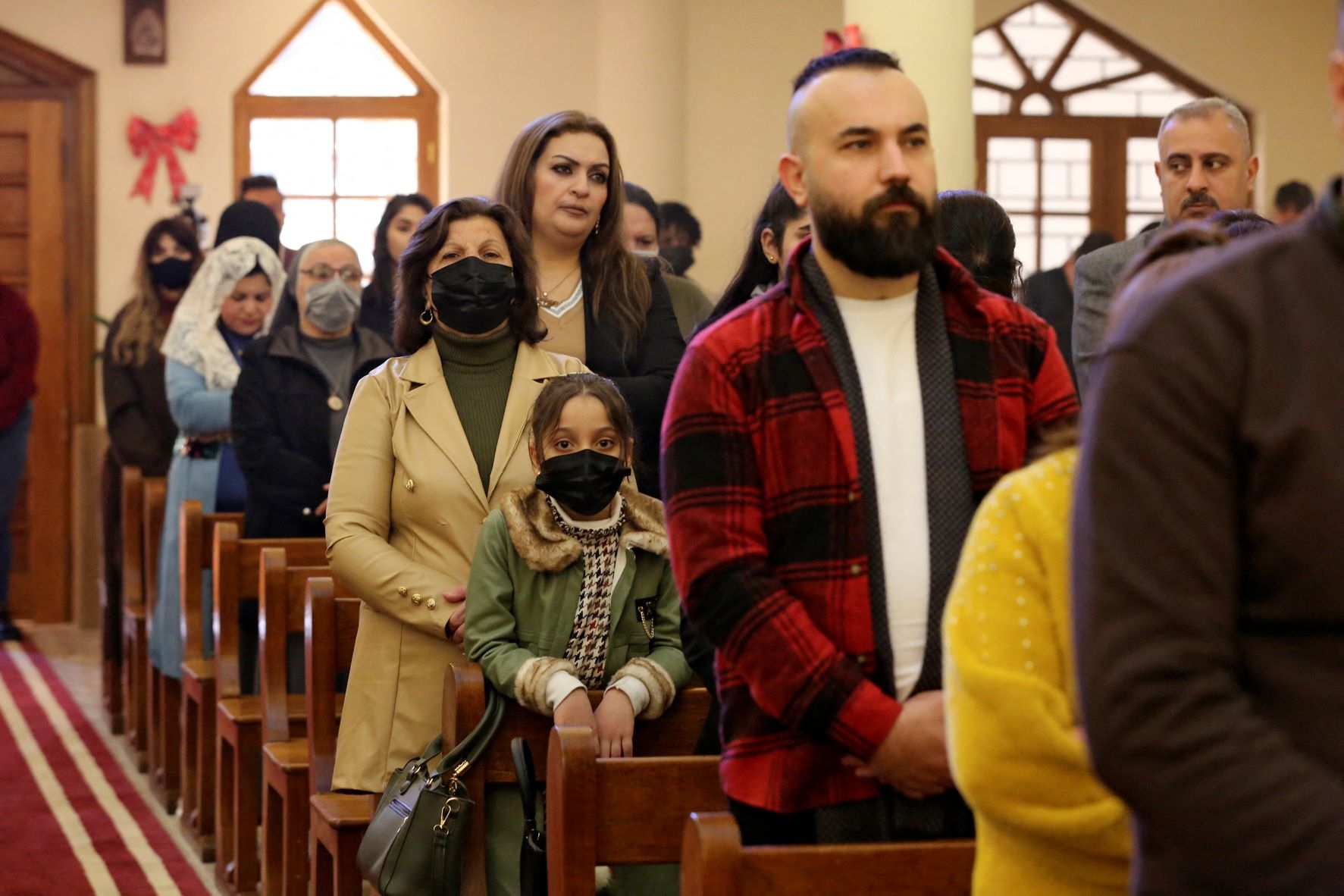
Iraqi Christians attend Christmas Day mass at the Sultana Rosary Church in the Iraqi capital of Baghdad. Since the US-led invasion of Iraq in 2003, the country's Christian population has fallen from 1.5 million people to around 250,000, according to some estimates. Many have fled due to the lack of security brought on by conflict, as well as the threat of religious persecution by groups, such as Islamic State (IS) group. (AFP/Sabah Arar)
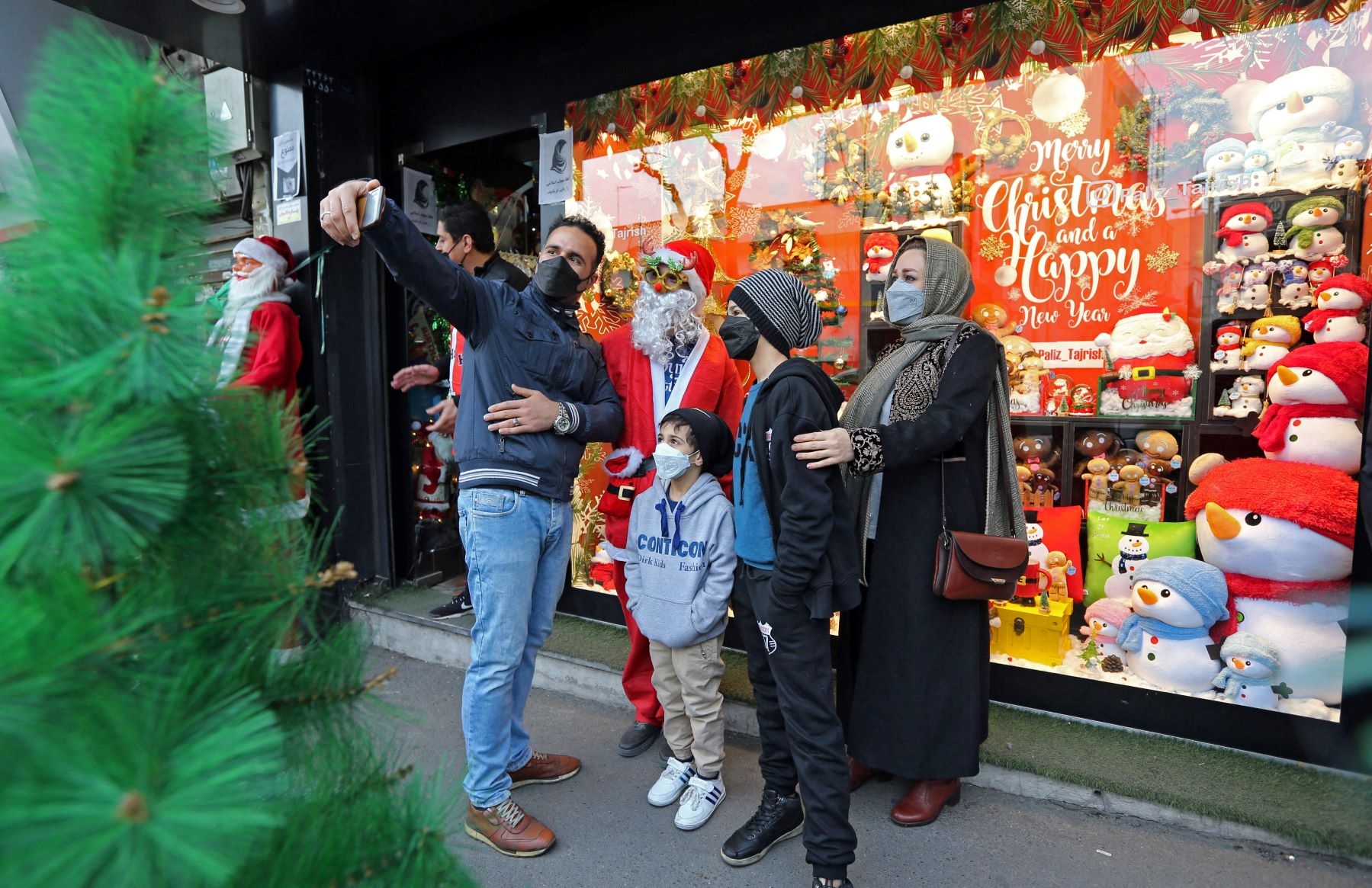
Iranians pose for pictures in front of a shop selling Christmas decorations in Tehran on Christmas Eve. (AFP)

A woman lights a candle while attending Christmas Eve mass at the Cathedral of the Holy Spirit in Istanbul. (AFP/Yasin Akgul)
Middle East Eye propose une couverture et une analyse indépendantes et incomparables du Moyen-Orient, de l’Afrique du Nord et d’autres régions du monde. Pour en savoir plus sur la reprise de ce contenu et les frais qui s’appliquent, veuillez remplir ce formulaire [en anglais]. Pour en savoir plus sur MEE, cliquez ici [en anglais].




